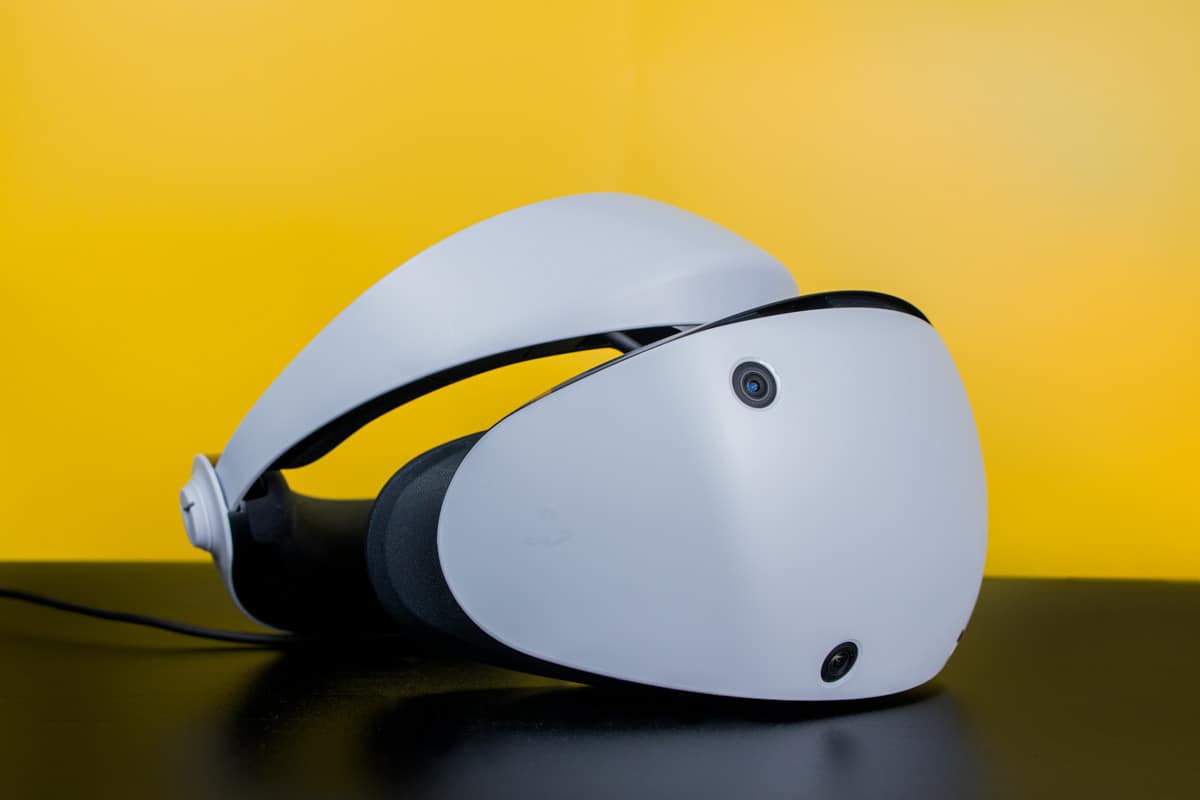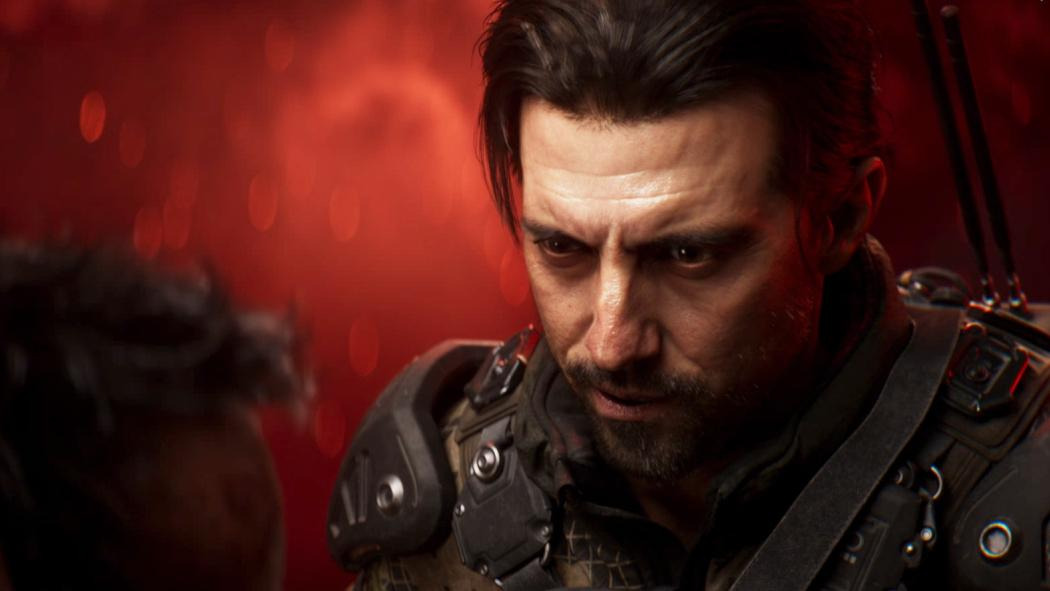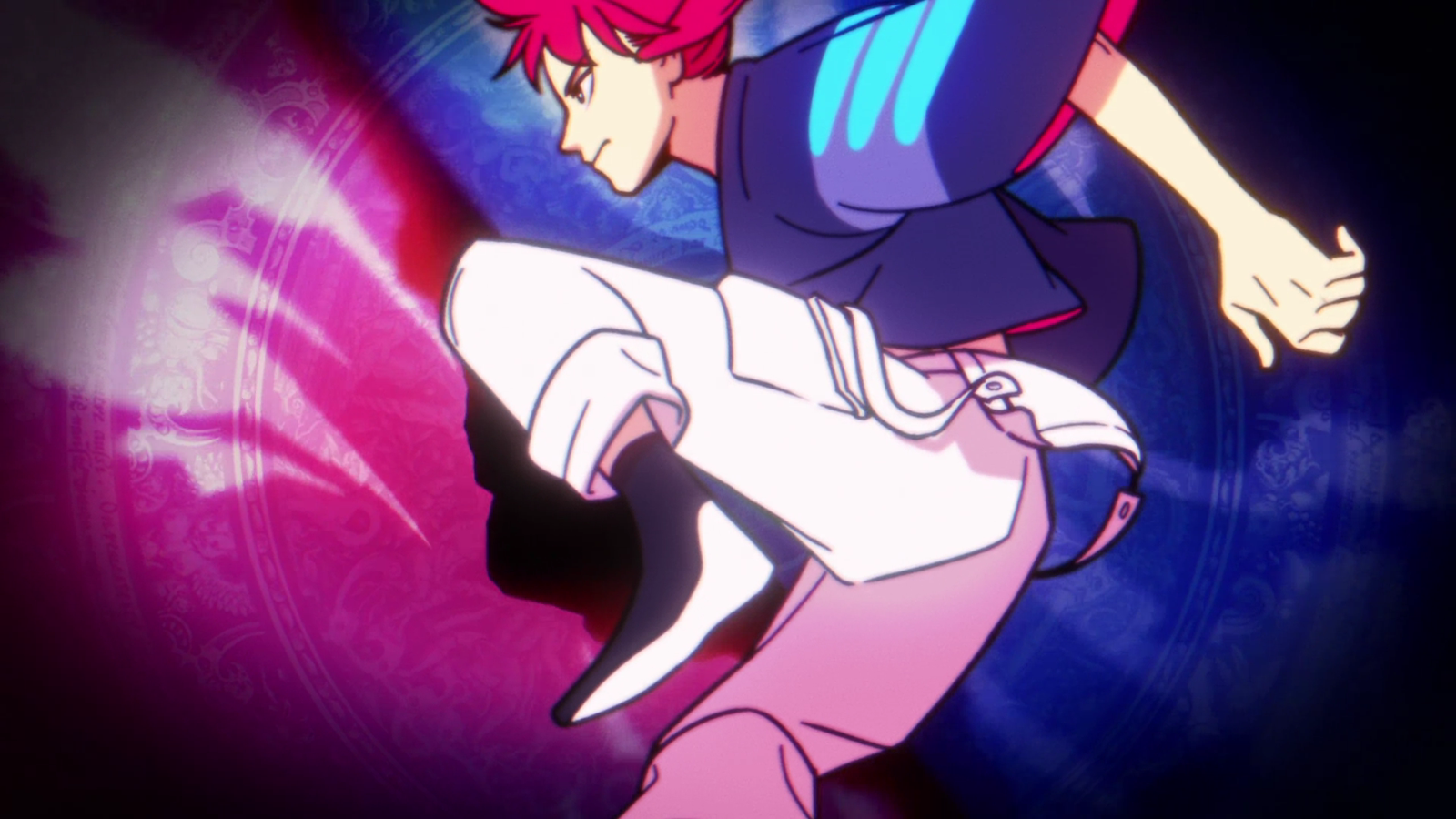You can trust VideoGamer. Our team of gaming experts spend hours testing and reviewing the latest games, to ensure you're reading the most comprehensive guide possible. Rest assured, all imagery and advice is unique and original. Check out how we test and review games here
Virtual Reality headsets have been around for years now. Oculus may have pioneered our modern conception of VR headsets, though the first prototype actually surfaced in the late sixties. The Sword of Damocles, as it was named, was a dystopian contraption of cold metal tubes and required a room of super-computers to function. It laid the foundations for one of the world’s most exciting emerging technologies – and the PSVR 2 is now leading the charge. Read on to find out why we think it’s one of the best VR headsets for gaming on the market right now.
It will replace the aging PSVR which was the best-selling VR headset ever released for a period of time, so there’s a certain expectation for the PSVR 2 to live up to. It features a composite 4K display, foveated rendering and industry leading eye-tracking technology. Not only that, but the software is highly responsive, intuitive and frankly, quite impressive. However, exactly as you’d expect, there’s a catch. It’s expensive.
PSVR 2 design
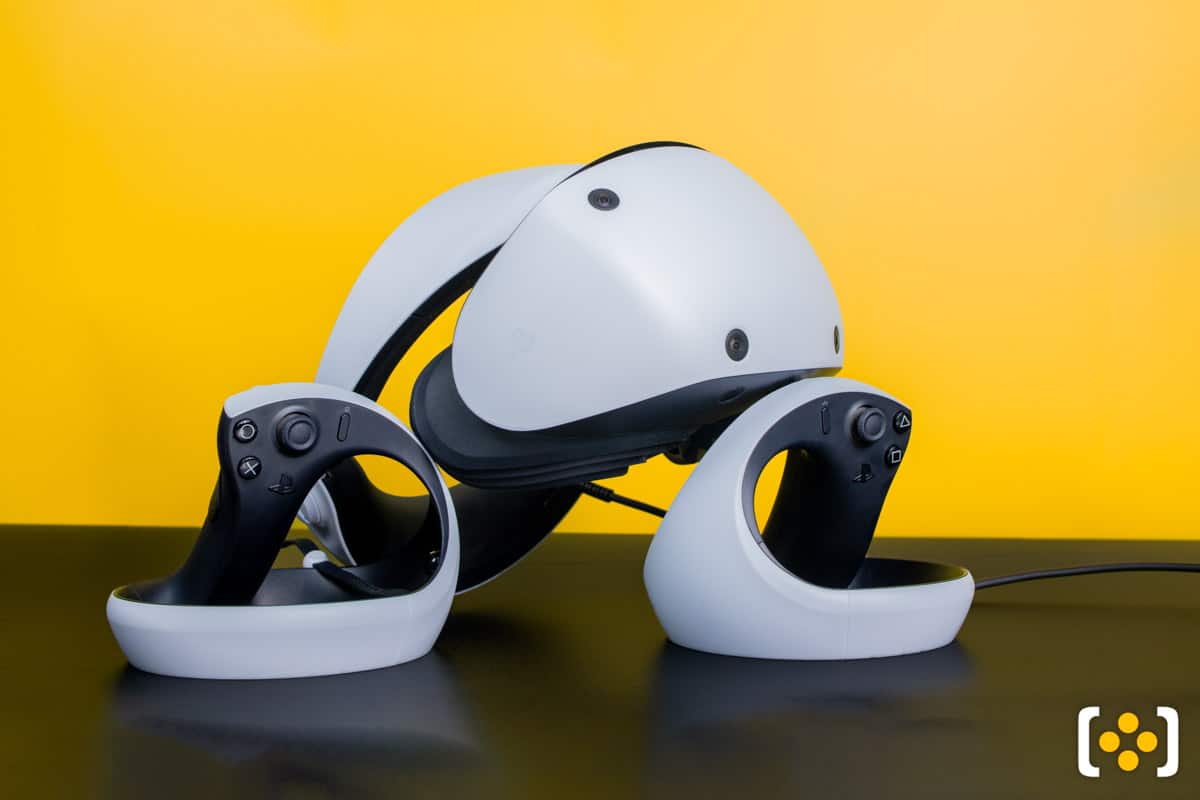
The PSVR 2, like the PS5, has a similar white design that signals a departure from the iconic sharp, black edges that PlayStation had once been synonymous with. Instead, the headset has soft, rounded edges that build on the form of the original PSVR.
The headset’s bulkiness is a bit of an illusion, as much of the weight is stored in the display and lenses, whereas the headband itself is quite lightweight.
In order to put the headset on, you have to push the button at the back and slide it out. Once it’s on, you can then adjust to your head-size, and then tighten with the dial at the back. This is a fairly straight-forward procedure, and the visor at the front can be pulled closer or further to you, depending on the depth of your eyes.
It’s a very efficient design in terms of functionality – though the placement of buttons is the only aspect that caused us problems. The Power button and See-Through mode buttons position below the visor can be a bit tricky to reach, especially when you’re holding the controllers. A more ideal home for these two buttons would be on top of the visor, though realistically you will get used to it fairly soon.
How does the headset feel?
For many, one of the most important features is how the headset feels when you’re wearing it. If you end up buying a PSVR 2, we guarantee that the first thing you’ll do when you take it out the box is put it on. Virtual Reality is a composite of digital and physical, so how the headset feels on your body is a crucial feature.
When you put the PSVR 2 on for the first time – you can really feel it. It’s not uncomfortable at all, it’s just, noticeable. For what is a quite a large headset, the PSVR 2 is surprisingly light. Perhaps this can be attributed to the rubber gasket lining surrounding the lenses, which when compared to the Pico 4 VR, is much lighter though certainly not as comfortable.
For us, the rubber gasket lining is one of the most controversial compromises with the PSVR 2. While it’s lightweight and soft, it’s pretty flimsy and doesn’t really absorb much of the pressure of a 560g headset squeezing on the bridge of your nose. Other rival headsets feature cushioning, which is much more malleable and comfortable for your face. In terms of the feel of the PSVR 2 – this is the only concern.
It’s all green pastures from here as the PSVR 2 is still a comfortable headset to have on your head. When you finally tighten the headset properly, you’ll get a real eureka moment where all the on-screen visuals tighten up and focus. Experiencing this for the first time is unreal, especially with the visual immersion on display.
Moving your head with the headset isn’t an issue despite the so-called bulkiness. It’s not too heavy that your head is going to lose balance, nor do you feel claustrophobic or suffocated. The PSVR 2 has a well-balanced feel to it, and ultimately, it’s comfortable enough that the few pain points are forgivable.
If you’re worried about motion-sickness, the PSVR 2, like all other VR headsets, suffers when you’re moving in-game. The solution to this is usually implemented by game developers, who offer ‘teleportation’ as the optimal mode of transport. We strongly implore to use this feature.
How do the controllers feel?

If you’ve never used VR before, you might think that the PSVR 2 controllers feel weightless and kind of odd. In reality, they are. But that’s a good thing. After loading up a game, the controllers don’t feel like they’re in your hands. We noticed this first in Horizon: Call of the Mountain, which launches with the PSVR 2. The first truly interactive experience in the game asks you to scale a ladder, which was a much more enjoyable experience than it sounds.
The controller’s subtlety added a quiet layer of immersion with their near feather-like weightlessness. The controllers have responsive sensor in the triggers which detect whether or not your fingers are touching them. Likewise, the analogue sticks contain a similar technology, and together they really help the PSVR 2 to simulate your hands real life behavior in-game. You will notice this when engaging in physical actions in-game.
The PSVR 2 controllers evoke the same compact feeling that the Nintendo Wii Nunchuks were famous for, until you notice the huge round infrared LED light rings around them. This design is commonplace in VR controllers, though the PSVR 2 seems to have really nailed it. At no point did the halo ring feel like an obstruction, though the only problem might occur if you’re wearing a watch, so if you are, just take it off. Time stands still in virtual reality.
Controller ergonomics
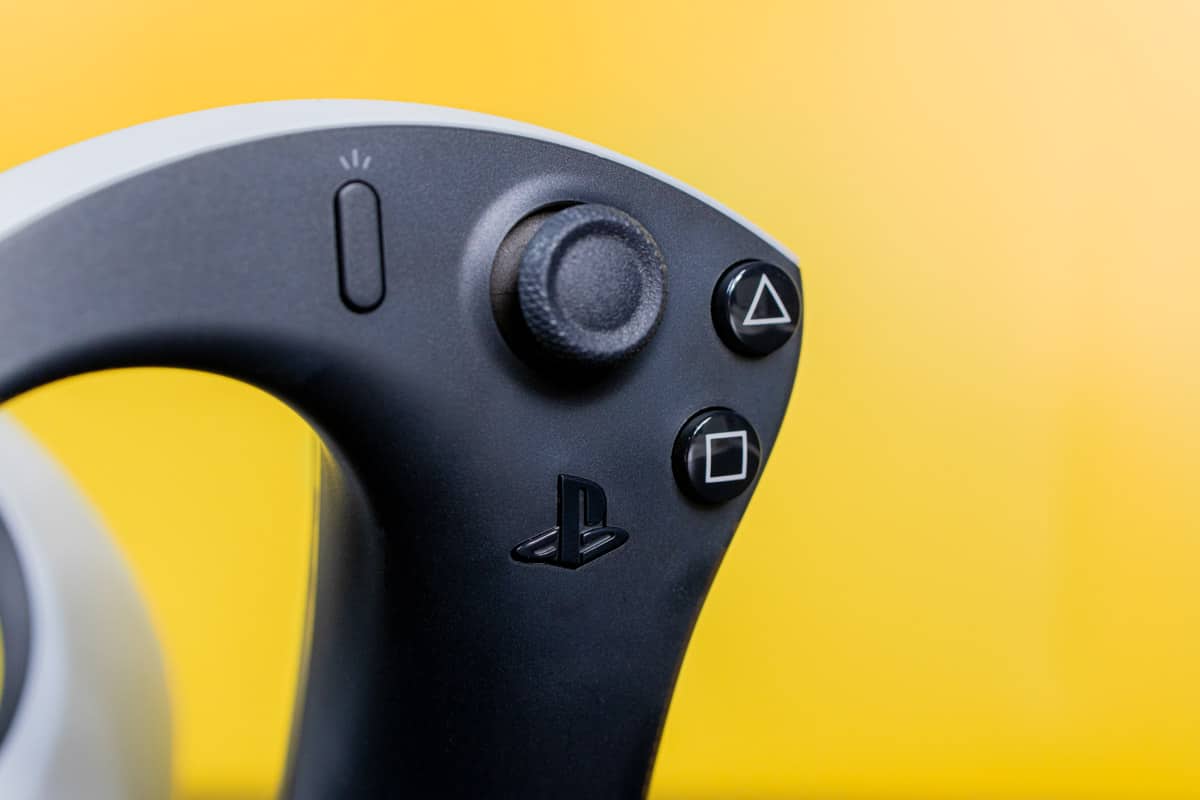
If you’ve played PlayStation your whole life, the lay-out of the controllers will definitely throw you off. There’s no D-Pad, which isn’t really a huge issue at this point. However, the only obstacle to overcome is the input buttons which are split down the middle. The left controller has Square and Triangle in a fairly familiar configuration, though the right controller has the Circle and Cross buttons with their direction reversed.
This decision seems to be a compromise for the analogue sticks, which sit beside the buttons rather than below them. The buttons themselves are much smaller than ordinary DualSense buttons, and have a tactile clicky switch rather than membrane. The PSVR 2 buttons also require a much higher actuation force than DualSense buttons, which isn’t a huge problem, though they do feel slightly cheap in your hands.
The PlayStation buttons have an extremely low profile. In fact, they’re almost unnoticeable at times. Although, the inclusion of two identical buttons feels arbitrary. Regardless, while the feel of the controllers isn’t quite what we’re used to from Sony’s controllers, somehow they still seem to make sense.
PSVR 2 performance
Set Up
This was much more fun than we expected. You plug in the PSVR 2 with a USB-C cable, and follow the on-screen instructions. You’ve then got to do a 3D scan of the room, which was both disorienting and enjoyably psychedelic. This was the first example of the ‘see-through mode’, which helps you to gather your surroundings within the room and prevent you from injuring yourself.
You also are taken through the motions of setting up eye-tracking, which was like a scene from a Gaspar Noe film. After this, you’re good to go.
Gaming
The PSVR 2’s performance blows the competition out of the water. Before we managed to get our hands on the headset, we were sceptical of claims that it could out-perform a VR rig with an RTX 3090 Ti. After testing it out a little, we can safely say that Sony have pulled it out the bag with the PSVR 2.
The PSVR 2 has dual 2K OLED displays that form a 4K image, and it’s stunning. Obviously, the picture quality isn’t as crisp as what you’d get on a TV, though this is to be expected with VR as the display is distorted through magnification lenses. Regardless, colors are vibrant, and HDR brings the most out of the games the console has to offer.
Paddling down the river in the first level of Horizon: Call of the Mountain was an immersive enough experience, though when the machines surface from the water and the boat is toppled – we were aptly blown away. VR has come leaps and bounds in past years and PSVR 2 is no exception to that. The haptic feedback was a subtle detail enhancing the immersion, while the crisp visuals really settled the deal.
Moving vines out the of the way and feeling the responsiveness of water was incredible, though the most impressive part of the game-play came down to combat.
The controllers, alongside the headset’s responsiveness, really suited the archery combat style. Many of us might remember pretending to be Legolas or Robin Hood growing up, and maybe, with the PSVR 2, you really can be.
Getting the hang of the shooting mechanisms wasn’t a steep learning curve, and the experience was visceral. This was the point the PSVR 2 started to sing and dance for us.
Foveated Rendering
One of the key developments with the PSVR 2 has been the inclusion of foveated rendering, which uses eye-motion tracking technology to enhance visuals in areas of focus, while decreasing the rendering allocation to areas in your peripheral vision.
We won’t pretend that we weren’t spending half our time with the headset trying to catch this feature out. Against our best efforts, it worked perfectly the whole damn time.
Textures look crisp and performance never once seemed awkward or jittery. The PSVR 2 sets a fantastic baseline for how a VR headset can perform, and foveated rendering is at the heart of this.
Eye-motion tracking
The PSVR 2’s eye-motion tracking is phenomenal, and could possibly be the headset’s standout feature. Whether it’s assisting your aim in-game, or contributing to the foveated graphics rendering, the eye-motion tracking is always quietly chugging its motors away.
Cinematic Mode
The PSVR 2’s Cinematic Mode is a novelty feature, and for us it, it might just stay that way. With this feature, you can use the headset to act as your PlayStation’s dedicated display. Visuals are rendered in 1080p, which is noticeable, though not a cause for much concern. You can play regular PS5 games and even consume your favorite media via apps.
Our opinion of the PSVR 2’s Cinematic Mode is less an issue with the execution, but more a focus on the form. This feature is an excellent example of what VR could offer years down the line – though at the state we’re at with technology, sitting through an entire episode of The Last of Us is far too uncomfortable and at some points, became a chore. When the technology is lighter and more discrete, perhaps this feature could become commonplace in our homes, but if you’re looking for a device to replace your TV – it’s probably not the PSVR 2.
See through mode
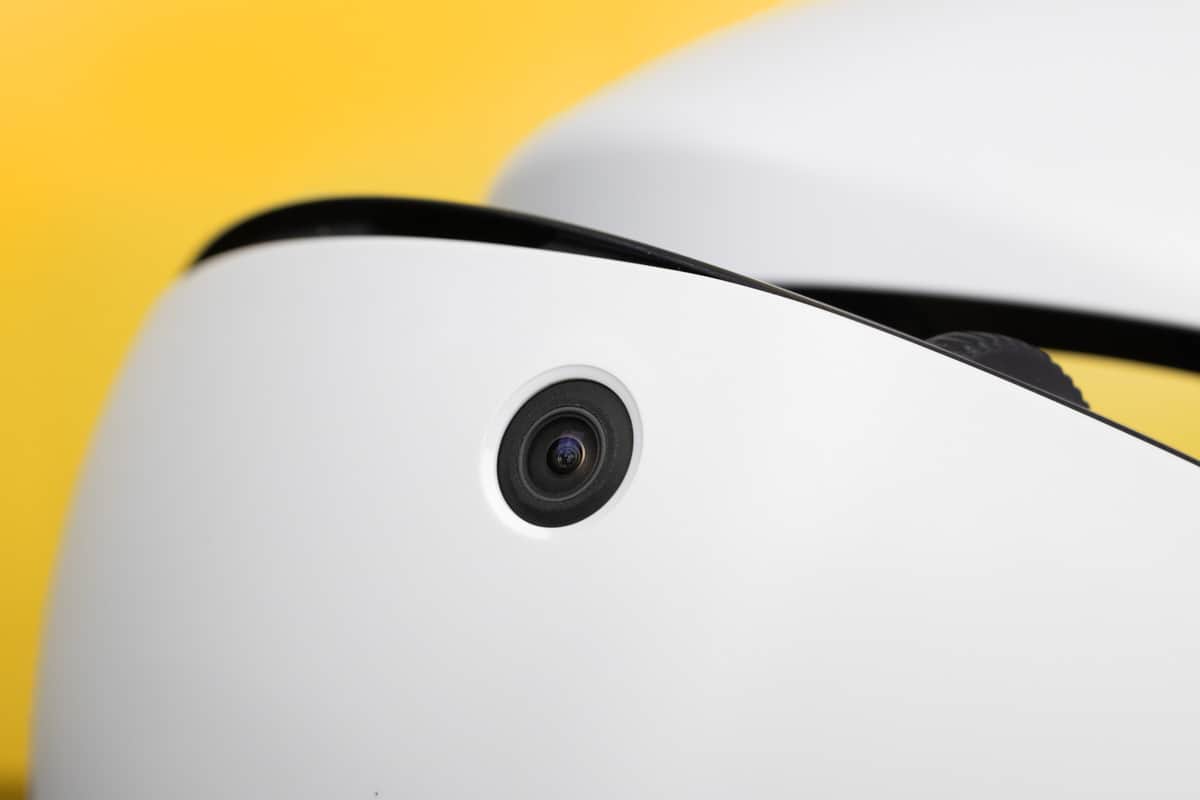
This feature is used less for gaming, and more to help you locate yourself in your surroundings. The feature is black and white, responsive, and honestly, as equally fun as gaming.
You see the room you’re in through a black and white video with a fuzzy film-grain. Your hands move, and the video after a tiny response delay. We’ve never quite felt like a cyborg, that was until we activated this feature.
This feature is yet another example of the PSVR 2’s technical prowess, and Sony has clearly come leaps and bounds since their original headset. We’re particularly excited to see how augmented reality could be implemented with this hardware.
Should you buy the PSVR 2?
The PSVR 2 is a well-polished product exemplifying Sony’s acute attention to detail. However, it’s the performance of the headset that really makes a case for VR as the future of not just gaming, but technology itself.
While the headset is an incredibly immersive experience, the slight discomfort while wearing it is something to note. Regardless, we had enough fun playing with it that this became unnoticeable at points. The visual quality is fantastic, and the controllers feel responsive and intuitive. However, the problem we imagine many will encounter with the PSVR 2 is the price.
Set to cost $549 upon launch, this is more than the PS5 itself. These aren’t cheap times, and the PSVR 2 isn’t cheap either. However, when you look to the headset’s competitors priced above $1,000, it’s not the worst option, it’s probably the best option.
While you probably won’t need a monitor for your PSVR 2 – you can check out WePC’s Best Prime Day monitor deals here.
